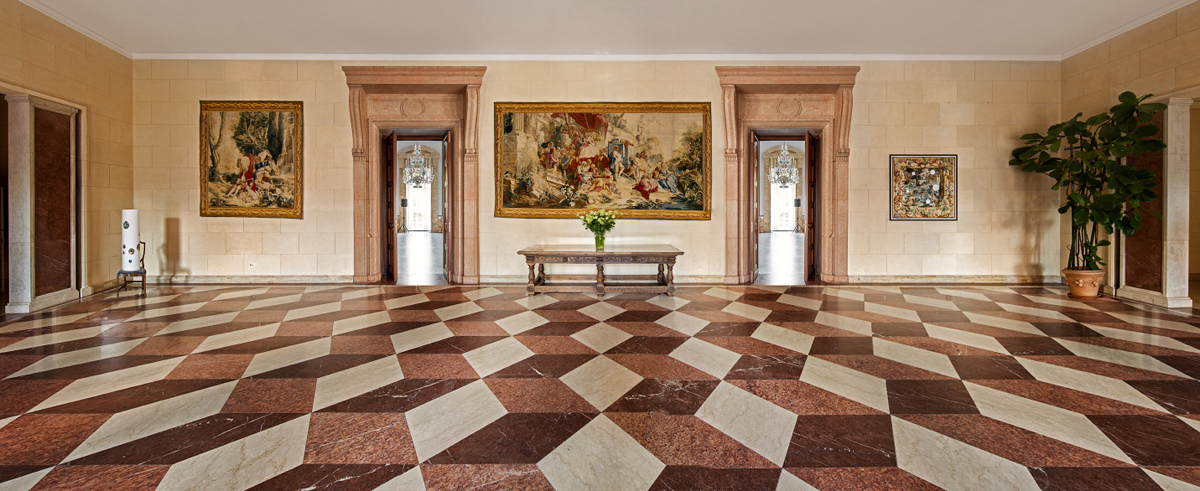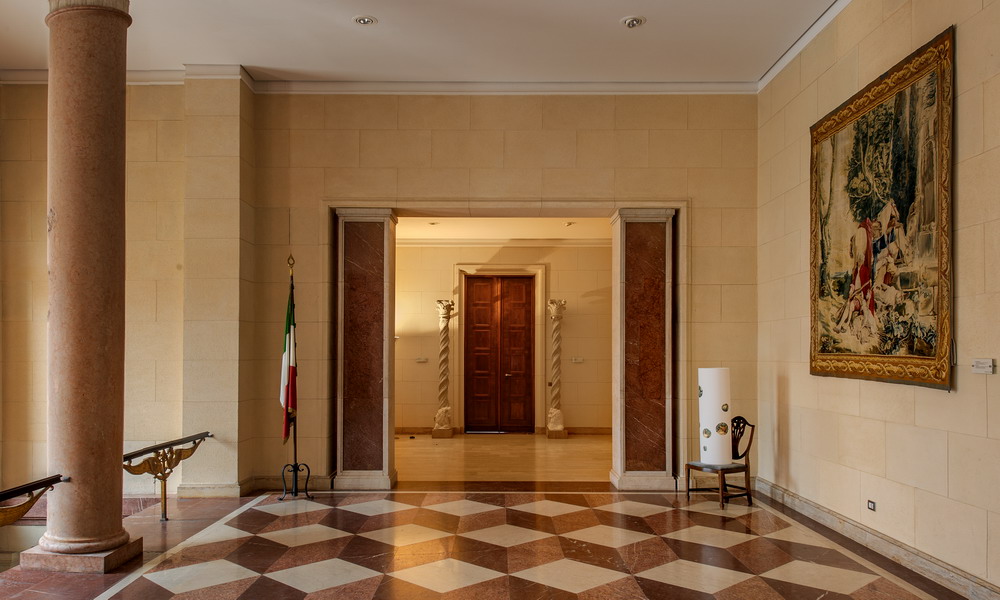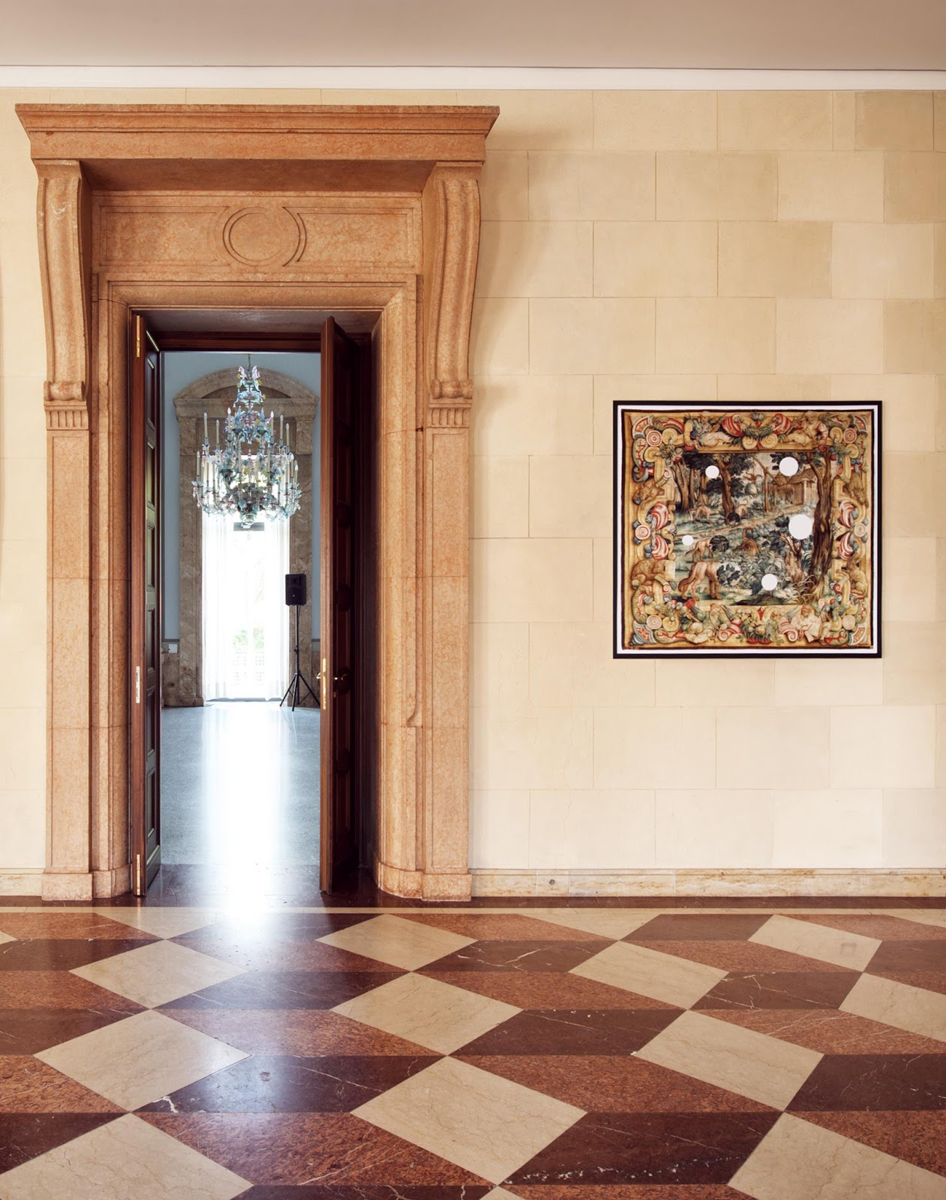See photos
Florenz Contemporary, Embassy of Italy, curated by Angelika Stepken, Berlin.
September - November 2015

It is becoming more and more common to find artists using archival material in their art projects. Today’s artists create all sorts of new projects by redefining fragments of the historical art world.
As you travel through the historic centre of Florence and her surrounding countryside it’s almost impossible to avoid coming across artistic scenes that have long lost their intrinsic value. We are continually bombarded by works of art which we never fully explore because of the sheer quantity, somewhat like the enormous mass of information that floods the world wide web, though the art world never spreads out to the same extent.
Every object contains a story that we could explore in depth, trying to discover all its characteristics.
The more we explore the more the history of art mutates, shifting like quicksand in front of our eyes.
The ways in which we interpret a work of art are influenced by the epoch in which we observe it, our education and a whole host of other factors. The art work itself gradually disintegrates
Every significant work of art spawns a large quantity of new art works that take something from it.
The artist’s modus operandi feeds continually from the works of the great masters, from bags of knowledge, stirring up the contents and enlarging apparently secondary aspects.
It’s as though artists need an unstable base, to make their great art tradition into unexploded dynamite or new territory to explore. All sorts of events, losses, things that dissappear in time, derive from our heavy, organised art history, often bubbling up from a subculture that succeeds in elevating the value of fragmentary pieces taken out of context to create new works of art.
Wolf hunt with traps derived from a Squilli tapestry, now in the Palazzo Pitt vaults, created in 1566 from a drawing by Stradano. This tapestry, originally part of a series of tapestries, all depicting hunting scenes, is the only remaining one, the others having disappeared, possibly stolen from the Italian Embassy in Berlin during the second world war. The new Italian Embassy was almost ready for occupation, fully furnished, with the tapestries hanging on the walls, when war broke out, thus preventing the staff from entering. The building lay abandoned for many years, until it was restored and once again occupied in 2003. By then the tapestries had disappeared.
Old works of art often have pieces missing from them and the ways in which they have been restored draws attention to the memory of the missing elements, causing one to re-examine the whole work from a historical perspective.
Robert Pettena displayed a photographic reproduction of the Wolf Hunt with Traps tapestry, almost life size, in one of the main rooms of the Embassy, drawing the viewer’s attention to the missing circles, where part of the vegetation had been removed and used to cover the heads of the dying wolves. This changed the meaning of the puzzle, giving the scene a peaceful aspect, as though time had healed the trauma of the historic event, although the original meaning of the tapestry had not been lost.
On the opposite side of the room there was a column of archive paper where the missing faces of the wolves were displayed. The viewers felt temporarily confused as they moved across the room, until they made the connection between the different parts of the work. The paper column reflected the fact that the neoclassical columns of the Embassy, on closer inspection, also proved to be fake.
Whichever way the viewers tried to interpret the work or a fragment of it, this became a creative process which brought new questions to the surface concerning their artistic inheritance. Every real and reassuring reference dissolved, leaving the viewer free to recompose the image according to their own network of experiences.
Restorations, substitutions and revaluations lead to new discoveries and creative possibilities in the contemporary art world. Stealing from other works of art and mixing it up in no way detracts from our artistic patrimony, but rather adds to it, enriching and contributing to a whole new series of meanings within old established works of art.
Art historians have traditionally tended to divide artistic flow into specific movements, whereas in reality these movements were often inextricably intertwined.




